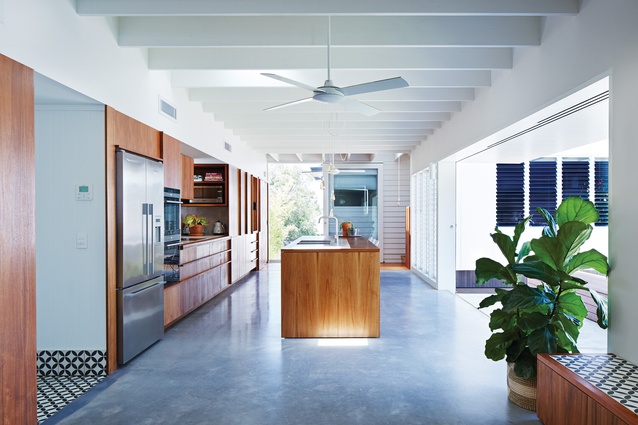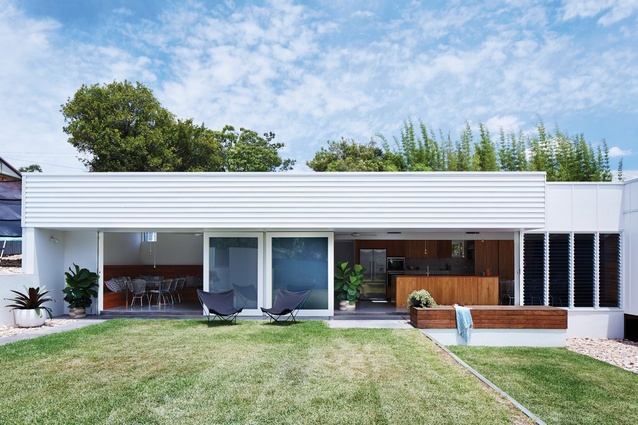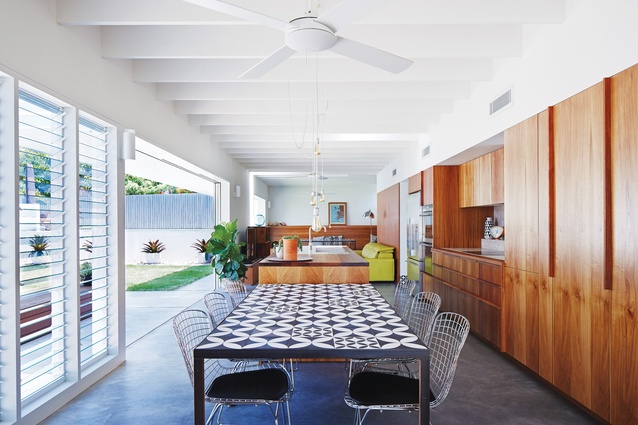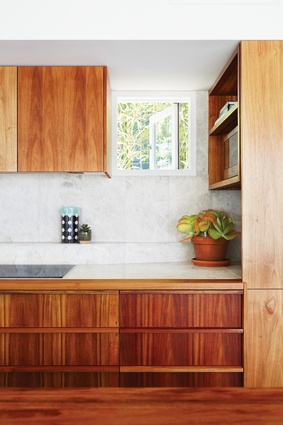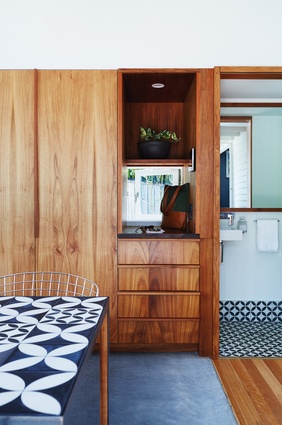A ‘bold new box’: Camp Hill Extension
This project by Nielsen Workshop and Morgan Jenkins Architecture provides an interesting model for alterations and additions to a Queenslander home, leaving the existing proportions largely intact and creating a new way of interacting with the site.
The Queenslander house: romanticized and revered, but so often stretched, pulled and pushed out of all proportion in order to accommodate the new. A recent extension to a house in Camp Hill by Nielsen Workshop and Morgan Jenkins Architecture questions this perceived need to fundamentally alter a Queenslander in the process to generate more interior space and a connection to the outdoors.
Rather than forcing this project into the footprint of the existing dwelling by raising it and doing away with the undercroft space, the extension slips past the original house and wraps around the western and southern edges of the property. The new structure connects with the existing house only through a short corridor and modest extension to the main living room.
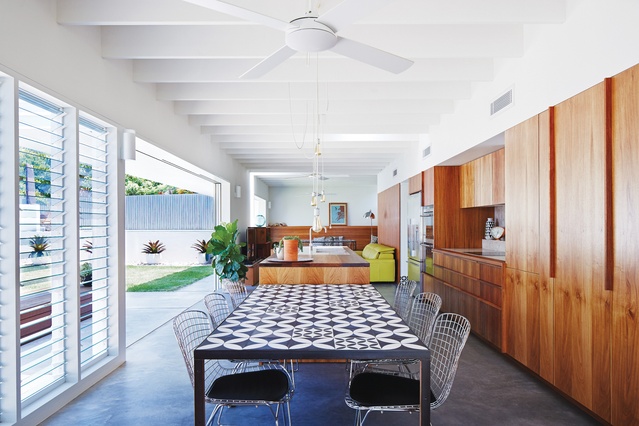
Lachlan Nielsen and Morgan Jenkins’ collaborations have been described by some as subscribing to a kind of modernism – or at least exhibiting some modernist tendencies. This is an intriguing observation, but perhaps one that overlooks the lack of ego in the duo’s work to date. At Camp Hill Extension this is evident in the siting strategy for the extension, through to choice of materials and the resolution of details.
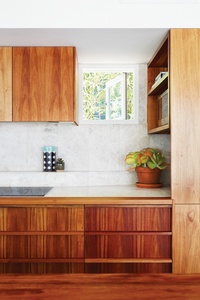
“Sliding” the extension past the old house and toward the back of the site preserves the existing language of the street while creating a completely new entry sequence to the property that only registers once visitors are invited inside the front gate. Protected by the front fence and its distance from it, the new front door is a striking fixed-glass panel wrapped by a significant timber hood that splays out to the western boundary to accommodate a small number of entry stairs. Importantly, this is also the first opportunity to catch a glimpse of the exposed timber structure to the ceiling and soffit.
The expressed timber roof structure has been engineered to allow for a future second storey, but for the moment it serves (for me, at least) as an important reminder of the “lower” space that this easily might have been. Freed from a more conventional location underneath the Queenslander, this new space retains the rhythmic texture of what could be floor joists, while playfully breaking with this association through small, carefully placed skylights that introduce pockets of light across the project.
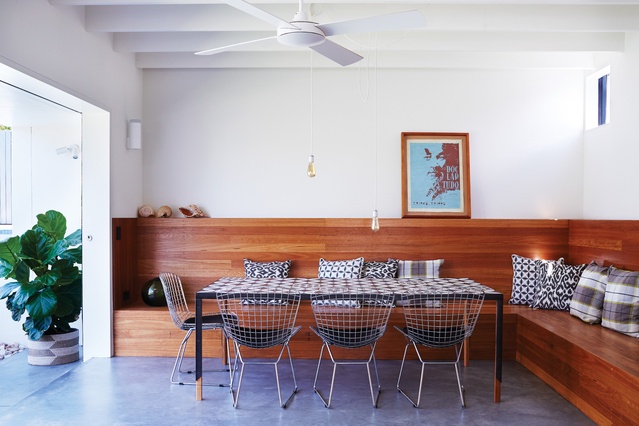
The western edge of the extension has been stacked with rich timber cabinetry and small utility spaces, such as a powder room and laundry, further shielding the kitchen and entertaining spaces from the afternoon sun. The cabinetry, constructed by Lachlan, Morgan and Blackwood Collective using sustainably sourced Tasmanian blackwood, folds the kitchen bench into the storage wall. Using this depth, and in contrast to the painted weatherboards and framing across the rest of the block, this beautifully crafted and warm wall seems to anchor the project to the site. Despite also being a timber structure, the extension manages to project a heaviness that provides a counterpoint to the existing house.
The polished concrete floor opens out to the east and the backyard through large stacking sliding doors, extending beyond the line of enclosure to claim a sheltered outdoor area beneath the roofline for the interior. The ground rises steadily from the street to the back of the site and the extension works with this condition through the use of terracing that puts much of the backyard level with the new structure. The terraces also create enough separation between the pool and the lawn so as to do away with the need for a traditional pool fence.
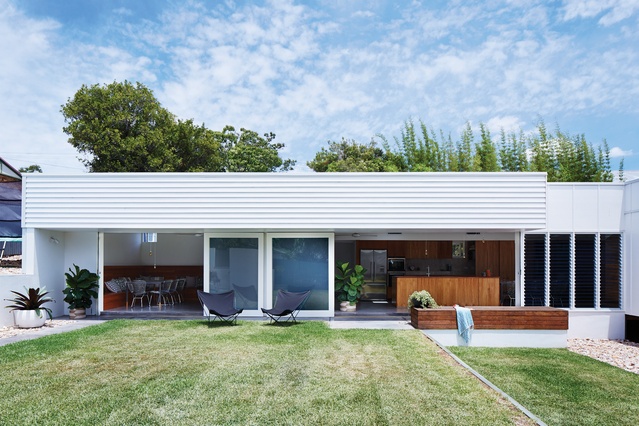
While the extension is barely readable from the street, it exerts significant control of the back of the site through this landscaping gesture. Components of the backyard are configured into a series of orderly layers, like a stepped David Hockney pool scene. The young trees that form a grove between the existing house and the lawn will, in years to come, further reinforce the clean edges of this area.
Camp Hill Extension can be read as both an escaped undercroft and a bold new box that turns the Queenslander logic on its head – a space where timber is rich and heavy, and the landscape of the backyard is strongly ordered in the presence of this new structure. The project provides an interesting model for alterations and additions to a Queenslander, leaving the proportions of the existing house largely intact, while still proposing a thoroughly new way of entering the house and interacting with the site.

